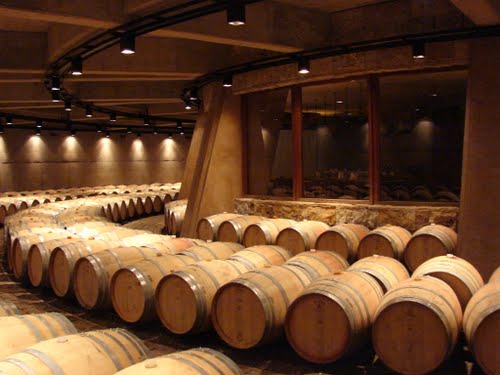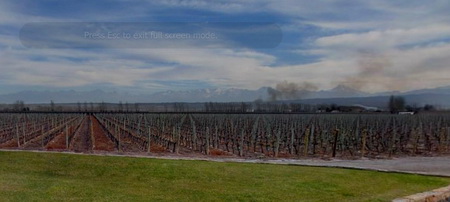 Continued from Part 1 of Catena Wine
Continued from Part 1 of Catena Wine
That robust work ethic has been in the Catena family for generations. In 1898, his grandfather Nicola left a small village in Sicily for Argentina.
He started planting vines in 1902 and raised a family. His eldest son, Domingo, married Angelica Zapata, a daughter of a large land owner, increasing the family’s holdings.
By 1973, the winery had become the country’s largest producer of cheap wines, pumping out 240 million bottles a year.
Nicolás, the son of Domingo and Angelica, was a brilliant boy and finished high school at 15. At the request of his father, he delayed university to work in the vineyard.
After several years, he continued his education, eventually earning a PhD in agricultural economics from Argentina’s University of Cuyo and then a master’s degree in economics from Columbia University.
But sadly, in 1963, his mother and grandfather were killed in a car crash. Nicolás returned home to help his father run the winery, postponing a doctorate at Chicago University.
“I worked side by side with my father. I was too young and too arrogant then to learn anything—but at least I knew I was arrogant,” he says smiling.
 Eventually, when the winery stabilized, young Nicolás longed to go back to academia, despite his love for the family business and making wine.
Eventually, when the winery stabilized, young Nicolás longed to go back to academia, despite his love for the family business and making wine.
“The pull of the intellectual life has always been as strong as the entrepreneurial for me. I have tried all my life to resolve that. Perhaps this is why I’ve always felt like two people.”
In 1982, he accepted a post as visiting professor of agricultural economics at the University of California at Berkley.
The academic environment was stimulating: his colleagues won six Nobel prizes while he was there. He also enjoyed discussing wine matters with professors in the viticultural program.
One weekend, he and his wife Elaina drove up to Napa Valley and toured the Robert Mondavi winery. Much later, he learned that his grandfather and Mondavi’s father had lived only fifteen miles apart in Sicily, though they never knew each other.
 Catena Wine Reviews and Ratings
Catena Wine Reviews and Ratings
Nicolás admired both the quality of the wines and the energy of the Mondavi people.
“I remember the shock of the freshness and the fruit in the wine, its balance and complexity,” he says tilting his head slowly to one side and then the other as though considering the visit from different angles.
“I thought, there’s no reason we can’t do this in Mendoza. That visit opened my eyes to the fact that a New World country could compete with Europe.”
After that, Nicolás and Elaina spent most weekends visiting Californian wineries. When they returned to Argentina in 1992, he took over the winery and sold all the family’s vineyards except for the original Bodega Esmeralda, planted by his grandfather.
He invested in advanced computer and robot technology as well as stainless-steel tanks and French oak barrels. He also convinced Paul Hobbs, a respected Sonoma winemaker, to work with him during the harvest.
Since Argentina lies south of the equator, the grapes are picked from January to April, conveniently off-season for Hobbs.
 Nicolás planted Chardonnay and Cabernet Sauvignon, believing (like many others) that these two grapes alone defined wine quality internationally.
Nicolás planted Chardonnay and Cabernet Sauvignon, believing (like many others) that these two grapes alone defined wine quality internationally.
“I made the same mistake as the Californians: I tried to imitate France in order to beat them,” he admits quietly.
It was his father who convinced him to consider Malbec, which the senior Catena believed to be the country’s patriotic grape, making it in the popular oxidized style that Nicolás calls the “sherry approach to winemaking.”
Malbec got no respect in fine wine circles, the stuntman-double of brute strength but no subtlety. Its only role was to beef up the color, alcohol, and tannin in more aristocratic Cabernet blends.
“I loved my father very much, so in order to please him, I started a little project on Malbec,” he recalls.
Read Part 3 of Argentine Wine …







